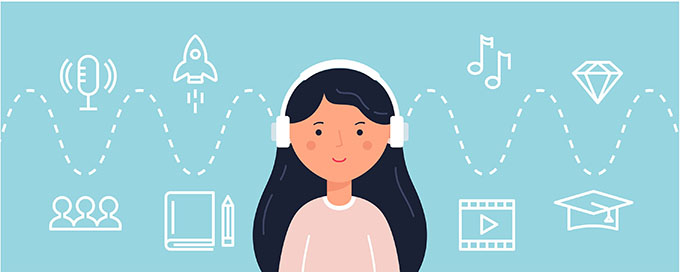
The metaphor of learning as a product of a transmission still determines a common way of understanding training processes. By the general public, but also in university settings.
Thus, the image of the teacher who transmits knowledge to students remains in force, who write down the knowledge in the form of notes. Taking the model to an extreme, learning is verified when a person repeats from memory what they have written in their notes.
Is knowledge transmitted?
The truth is that learning does not come only by exposure and does not consist only of memorizing. A person learns by carrying out a complex cognitive process that includes understanding and reworking data.
According to Bloom’s taxonomy , remembering is at the lower level of learning and creating is at the higher level. On the other hand, being an individual process, it is more effective when it is built in a context of social interaction .
As a result of training, a person acquires the ability to deal reflectively, critically and creatively with new and real situations related to a given field.
This does not mean that a good master class cannot be learned or that the exhibition model is useless. It is learned, precisely because what for this model is in the second line, the role of the student , is also activated .
But when the perspective is changed and teaching-learning is understood as something focused above all on what the student does, the teacher emerges as support in a much richer, more active, reflective and autonomous training process, and no longer as an alleged transmitter of a knowledge.
Although the efforts for pedagogical renewal have been diverse and important, the idea of transmission, as noted, is still ingrained in the university. And this despite what the studies say and that what is proposed in the environment of the European Higher Education Area (EHEA) , the so-called Bologna Plan, is very different.
And despite the fact that, on paper, the official pedagogical guidelines of the universities are aligned with the EHEA. And that electronic resources for teaching, available for years, provide very helpful tools for changing perspective. But these resources are still not being used in a sufficiently generalized way.
The current crisis
A strong shock could really move things around in the short to medium term. And this shock – more than strong – has arrived: it is called COVID-19. If in any context the topic of turning crisis into opportunity may be appropriate, this is it. The need to bring part of teaching (or all, in confined situations) to virtual environments has created a golden opportunity for updating university programs.
Teachers will be interested in receiving training on digital tools because they need them. By obtaining this training, properly oriented, you will begin to discover possibilities that go through a training model that focuses on the role of the learner.
From there, you will see that these resources not only serve to deal with an extraordinary situation, but also as support for conventional face-to-face teaching. But this can only happen if educational institutions have a clear focus and exercise effective leadership towards renewal.
Answers
It is a mistake to react to the emergency generated by the pandemic thinking about how to reproduce with digital tools exactly what was done without them, or almost. And it is a bigger mistake if it is about replicating the exhibition model.
Having long hours with the students taking notes through videoconferences – either with the whole group at a distance or with half the students in class and the other half in front of the screen -, in addition to being exhausting and not very stimulating, is doing pedagogy of the 19th century with 21st century technology.
The videoconference is valid as a space for debate or reflection. But it is by no means necessary to schedule the same hours of synchronous contact with the students that are usually proposed for face-to-face teaching. Furthermore, the virtual classroom has other interaction resources that are not synchronous and therefore offer more flexibility.
Institutions should not provide faculty or videoconferencing as the primary proposal to respond to the pandemic or an unaffordable downpour of potential resources.
Rather, they should offer a basic and easy-to-understand virtual classroom design that ensures the minimum of a student-centered approach. And also a flexible schedule that reduces the weight of synchronous contact.
From here, teachers could structure their courses from a more open perspective and incorporate new tools as they felt more confident with the ones they learned.
The courses with proposals for individual and group activities that students can carry out without the synchronous presence of the teacher will be courses of higher quality. They will present more options and more opportunities for students to act in line with the competency challenges of the subjects.
Alternative to video conferencing
On the other hand, for the expository part of the subjects, as an alternative to videoconference, one can think of notes published in text format or in short videos of the teaching staff, as well as various readings. This material can be an interesting support that will also work in a normalized situation. For example, to apply the model flipped classroom ( Flipped classroom ) and, ultimately, to finish giving the digital and methodological jump.
Thus, it is about taking advantage of the situation of need to promote pedagogical renewal and the creation of teaching resources for the future. Orienting all the effort – which is not small – only to get out of the way of the situation that has been created and change as little as possible is not a good idea at all. A unique and strategic opportunity has opened to enter a virtuous circle of virtuality.
Author Bio: Marcos Cánovas is Associate Professor, Department of Translation, Interpretation and Applied Languages at Universitat de Vic – Universitat Central de Catalunya